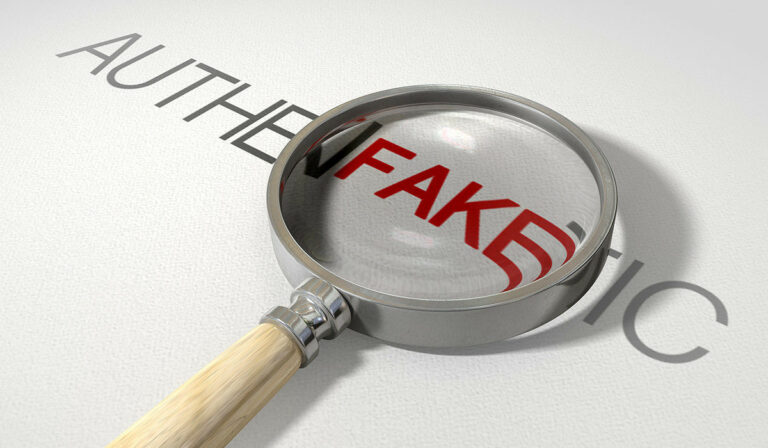Rome Business School, part of Planeta Formación y Universidades – an international network created in 2003 by De Agostini and Planeta Group – published the research “The Second Life of Counterfeit Goods in Italy. Case studies from the world of art and fashion,” which analyzes what represents a growing danger not only for consumers, but also for companies and the entire world economy. Counterfeiting, in fact, marked a turnover of 412 billion euros in 2019, corresponding to 2.5 percent of world trade. At the European level, an estimated 56 percent of seizures of counterfeit goods come from web sales.
The turnover of counterfeiting in Italy
Today, Italy is the fourth largest country in the world for counterfeit goods, after the United States, France and Germany, with total losses amounting to approximately 225 million euros. In particular, counterfeiting affects the fashion, cosmetics and art sectors, and generates losses for Italy of nearly 4 million euros (Guardia di Finanza, 2022). According to the International Chamber of Commerce, on the other hand, global jobs put at risk by the gray market are expected to amount to 5.4 million this year.
Young people and the counterfeit market
In June 2022, EUIPO conducted a study to investigate the habits of young people in the 15-24 age group in relation to the use of counterfeit and pirated products. The analysis shows that: 37 percent of young people surveyed say they have bought through an e-commerce channel at least one counterfeit product in the past 12 months (up from 14 percent in 2021); and that 1 in every 5 young Europeans has used pirated services online in the past few months, specifically movies (61 percent), TV series (52 percent), music (36 percent), software, and live sporting events (both at 35 percent).
Clothes and accessories remain in first place (17 percent), followed by footwear (14 percent), electronic devices (13 percent), and hygiene products, cosmetics, personal care, and perfumes (12 percent). Sometimes shoppers do not do this intentionally, but are misled given the difficulties in distinguishing authentic from counterfeit products, particularly in online, where they can stumble upon counterfeit products more easily. Michela Bonafoni, one of the authors of the research, recalls that “social increases the desire of the younger generation to keep up with the trends, and they are driven to buy fake products because of the rising prices of originals and the extreme reachability of fake products online.”
Counterfeiting and the cosmetics industry
As for Italy, the impact of cosmetics counterfeiting is 11.9 percent, amounting to 935 million euros in lost sales each year. Despite this, the cosmetics industry is growing strongly. In Italy, total spending on cosmetic purchases over the past decade has risen from 10 billion 448 million to 10 billion 640 million while, in online, it has risen from 27 million in 2011 to 871 million in 2021. However, there is an increase in counterfeit cosmetics being bought knowingly: according to a study by the Ministry of Infrastructure and Made in Italy (formerly the Ministry of Economic Development, MISE), 21 percent of the Italian population has bought a fake cosmetic at least once and 12.9 percent did so intentionally.
Tools to fight counterfeiting
“Barcodes, radio frequency identification, scannable tags and blockchain technology are just a few examples of applications that aim to protect and safeguard brands and final consumers. says Valerio Mancini, among the authors of the research. What to do, however, with the thousands of counterfeit goods seized each year? Mancini argues that we should “reintroduce the goods to the market once it is confirmed that they pose no risk to people. This is from the perspective of sustainability and circular economy, especially considering the scarcity of raw materials. The practice of destruction, today more than ever, is highly harmful to the environment.” Mancini adds, moreover, that its non-recyclable parts could be used for the creation of alternative source fuels, as proposed by many realities and startups, such as “Re-Circulate.”
With regard to works of art, one alternative to put them back into circulation is to auction them off, sell them, or give them to social purposes. Surely, however, there are works that simply cannot have a second life in the market because they belong to human history. In this case, it is worth highlighting virtuous examples such as the “Museum of Rescued Art,” a section of the Roman National Museum opened last year, which houses artworks that have been stolen, dispersed, sold or exported illegally. Another hypothesis under consideration for the protection of goods is the establishment of a scientific monitoring observatory, with a database shared by marketplace operators, brand-owning companies, postal operators, law enforcement and other public authorities. Finally, the idea of collaborative tables with fashion and luxury companies to curb the phenomenon.



